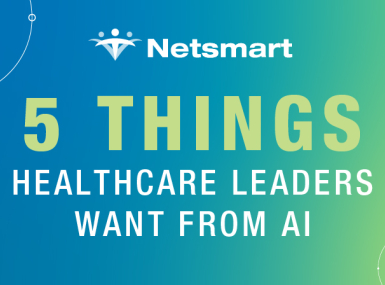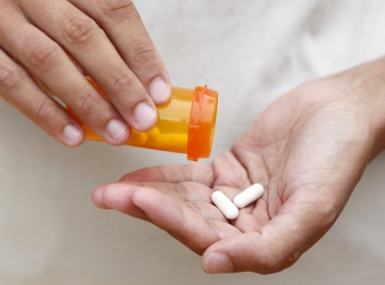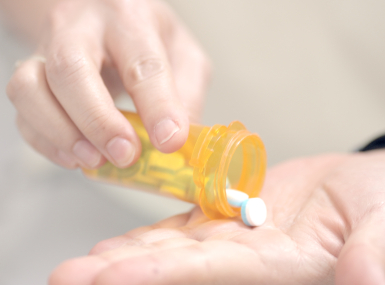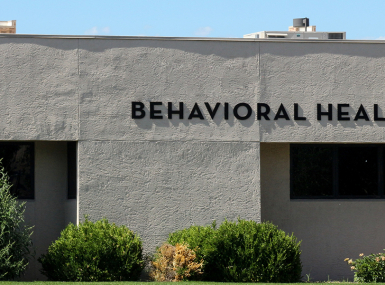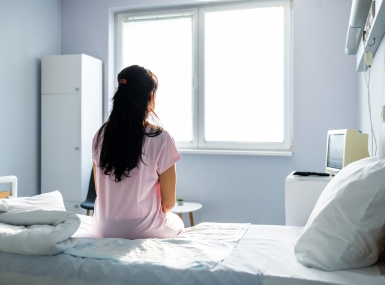Increasing Access to Evidence-Based Treatment: A NACo Opioid Solutions Strategy Brief

Upcoming Events
Related News
“Medication for opioid use disorder is evidence-based care.”
— U.S. Centers for Disease Control and Prevention1
What can be done to increase access to evidence-based treatment?
The Food and Drug Administration has approved three medications that safely and effectively treat opioid use disorder (OUD): methadone, buprenorphine and naltrexone. However, our healthcare system’s capacity to provide medications for opioid use disorder (MOUD) falls far below the current demand for care.2 Only 1 in 4 people who need MOUD are able to access them.3
A multi-pronged approach is needed to build up the treatment workforce, create effective pathways to care and save lives. Counties can reach these goals by:
Expanding treatment capacity: Even the very best referral and diversion systems cannot link people to treatment that doesn’t exist.
- The substance use treatment workforce can be expanded by connecting more healthcare institutions and practitioners with the training, support and incentives to prescribe buprenorphine.4,5
- Existing clinics can expand treatment capacity by expanding nursing staff,6,7 encouraging group medical visits,8 building collaborative care networks with mental health and social services4,5 and hiring nurse care managers and behavioral health professionals at the county level to coordinate care across local clinics.9
Maximizing pathways for treatment engagement: Effective referral systems are guided by the principle that there is “no wrong door” to enter treatment.10
- Emergency departments, primary care clinics, jails, harm reduction programs and resource centers can all serve as effective points of contact with treatment services.
- Telehealth options and mobile methadone programs can reduce common barriers to care and reach people in need across larger distances.11,12
What evidence supports these strategies for increasing access to evidence-based treatment?
Treatment providers need nursing support: Clinicians are more likely to prescribe buprenorphine if they have sufficient staff support and resources for managing OUD care.6,13 Adding a nurse care manager to the clinical care team is one of the most impactful facilitators of buprenorphine availability in any healthcare practice;6,7 it also improves patient engagement and satisfaction with care.14 In primary care settings, academic detailing has also been proven effective at supporting evidence-based prescribing practices and boosting prescriber confidence.15–17
Creative solutions benefit patients and providers: Group visits, also called shared medical appointments, are a long-standing strategy to meet growing demand for healthcare services.18 Group visits allow clinicians to deliver health care, medication support, peer-to-peer support and group psychotherapy to multiple patients in one setting.8
Technology can open doors: Telehealth options, such as phone or video-based medical appointments, dramatically improve access to MOUD and to mental healthcare. Patients who have access to telehealth tools are more engaged in treatment12 and are less likely to drop out of treatment early.19
Provide care where people already are: Effective recovery support “meets people where they are at.”20 Telehealth has allowed many syringe service programs (SSPs) across the United States to provide participants with immediate access to buprenorphine, HIV treatment and Hepatitis C treatment.21–27
Take treatment on the road: As of June 2021, DEA rules allow methadone clinics to establish and operate mobile methadone programs.28 Community-based methadone clinics can use mobile methadone programs to deliver medication to residents of rural areas and other under resourced settings29 and to persons being held in prisons and jails.30
Are there risks to my community if we don’t increase access to evidence-based care?
Yes.
Regions with lower access to evidence-based treatment have the highest rates of OUD and opioid overdose in the country.31,32
In 2020, an estimated 2.7 million people over the age of 12 were living with OUD in the U.S.33 This estimate does not include the approximately 2 million people who are incarcerated34 (the majority of whom are living with a substance use disorder35,36) or the nearly 600,000 people experiencing homelessness.37
The greatest unmet need for MOUD is in rural and under-resourced settings. The average American lives 22.7 miles from an MOUD treatment provider.38 Nearly 40% of rural counties have no local buprenorphine prescriber at all.31
What are best practices for increasing access to evidence-based treatment?
- Provide support for programs to implement telehealth services to expand MOUD access or add MOUD treatment to existing telehealth services.12,19
- Support local methadone clinics in going mobile by assisting with the costs of vehicles, equipment and staff.11
- Support the establishment of “health hubs” at community-based SSPs where clinics offering MOUD can be reached through telehealth and other cooperative arrangements.39
- Consider requiring substance use treatment providers to dispense or facilitate access to MOUD for patients with OUD in order to receive county funds.40,41
- Fight stigma and misinformation by voicing strong, unambiguous support for medication as an evidence-based treatment for OUD. Stigma and misinformation about OUD and MOUD pose significant and persistent barriers to people getting the care they need.42
What are best practices for increasing access to evidence-based treatment?
In 2020, the state of Rhode Island created a “buprenorphine hotline” that residents could reach by phone to be connected with a qualified clinician for initial assessment and, if appropriate, an initial buprenorphine prescription and a referral to a community clinic for continued MOUD treatment.12,43
In April 2019, the Caroline County Health Department, located on Maryland’s eastern Delmarva Peninsula, launched a Mobile Care Unit to provide evidence-based treatment with MOUD to residents in rural and underserved areas of the county.44,45 The Mobile Care Unit is telehealth equipped to connect with addiction medicine specialists at the University of Maryland School of Medicine in Baltimore in order to provide point-of-care diagnosis, medication initiation and follow-up care.44
The North Carolina Harm Reduction Coalition and Queen City Harm Reduction recently partnered with Duke University’s regional healthcare system to provide telehealth access to HIV prevention medication (PrEP), Hepatitis C treatment and OUD treatment (buprenorphine) to SSP participants in North Carolina’s New Hanover County and Mecklenburg County, respectively. More than 80% of the patients enrolled in the telehealth clinic were actively seeking MOUD access to reduce their drug use.46
Atlantic County Justice Facility, the local jail in Atlantic County, N.J., was among the first in the nation to utilize a mobile methadone program. The facility partnered with John Brooks Recovery Center, a community-based treatment facility and methadone clinic, to provide persons incarcerated in the jail with daily methadone treatment through the Center’s mobile methadone van.47
Author
Jennifer J. Carroll, PhD, MPH
Dr. Carroll is a medical anthropologist, research scientist and subject matter expert on substance use and public health. She is currently an Assistant Professor of Anthropology at North Carolina State University.
Additional Resources
For state and county leaders:
- U.S. Department of Health and Human Services, “State Policy Levers for Expanding Family-Centered Medication-Assisted Treatment”
For clinics and treatment providers:
- Massachusetts General Hospital, “Putting Group Visits into Practice: A Practical Overview of Preparation, Implementation, and Maintenance of Group Visits at Massachusetts General Hospital”
- U.S. Centers for Disease Control and Prevention, “Linking People with Opioid Use Disorder to Medication Treatment: A Technical Package of Policy, Programs, and Practice.”
- Providers Clinical Support System, PCSS Implementation Project Resources
Providers Clinical Support System (PCSS)
PCSS is a coalition of healthcare organizations, led by the American Academy of Addiction Psychiatry, dedicated to expanding and improving the clinical care of substance use disorders. Their website hosts numerous informational resources, toolkits, and webinars outlining best practices for the clinical management of substance use disorders and MOUD treatment. PCSS also offers direct mentorship for clinicians offering substance use treatment.
American Academy of Addiction Psychiatry (AAAP)
The AAAP offers DEA-waiver training for new buprenorphine prescribers as well as continuing education opportunities, regular webinars and a training series for clinicians, and a website filled with clinical resources and guidelines for providing evidence-based substance use disorder treatment.
Rural Communities Opioid Response Program – Technical Assistance (RCORP-TA)
RCORP-TA is a multi-year initiative by the Health Resources and Services Administration (HRSA) that offers numerous online technical assistance resources, including many on expanding MOUD access and building new pathways into treatment.
- Jones CM, Campopiano M, Baldwin G, McCance-Katz E. National and State Treatment Need and Capacity for Opioid Agonist Medication-Assisted Treatment. Am J Public Health. 2015;105(8):e55-63. Available here.
- Mauro PM, Gutkind S, Annunziato EM, Samples H. Use of Medication for Opioid Use Disorder Among US Adolescents and Adults With Need for Opioid Treatment, 2019. JAMA Network Open. 2022;5(3):e223821. Available here.
- Carroll JJ, Asher A, Krishnasamy V, Dowell D. Linking People with Opioid Use Disorder to Medication Treatment. Published online 2022. Accessed June 8, 2022. Available here.
- Marino LA, Campbell AN, Nunes EV, Sederer LI, Dixon LB. Factors Influencing Buprenorphine Prescribing among Physicians in New York State. J Addict. 2019;2019:7832752. Available here.
- Peterson LE, Morgan ZJ, Borders TF. Practice Predictors of Buprenorphine Prescribing by Family Physicians. Journal of the American Board of Family Medicine: JABFM. 2020;33(1):118-123. Available here.
- Kaplan-Dobbs M, Kattan JA, Tuazon E, Jimenez C, Saleh S, Kunins HV. Increasing Access to Buprenorphine in Safety-Net Primary Care Clinics: The New York City Buprenorphine Nurse Care Manager Initiative. American Journal of Public Health. 2021;111(2):215-218. Available here.
- LaBelle CT, Han SC, Bergeron A, Samet JH. Office-Based Opioid Treatment with Buprenorphine (OBOT-B): Statewide Implementation of the Massachusetts Collaborative Care Model in Community Health Centers. Journal of Substance Abuse Treatment. 2016;60:6-13. Available here.
- Eisenstat S, Siegel AL, Carlson K, Ulman K. Putting Group Visits into Practice: APractical Overview to Preparation, Implementation, and Maintenance of Group Visits at Massachusetts General Hospital. Published online January 2012. Accessed May 29, 2019. Available here.
- Brooklyn JR, Sigmon SC. Vermont Hub-and-Spoke Model of Care for Opioid Use Disorder: Development, Implementation, and Impact. J Addict Med. 2017;11(4):286-292. Available here.
- U.S. Substance Abuse and Mental Health Services Administration. The Case for Screening and Treatment of Co-Occurring Disorders. SAMHSA. Published 2022. Accessed February 26, 2023. Available here.
- El-Sabawi T, Baney M, Canzater SL, Weizman S. The New Mobile Methadone Rules And What They Mean For Treatment Access | Health Affairs Forefront. Health Affairs. Published August 4, 2021. Accessed June 8, 2022. Available here.
- Clark SA, Davis C, Wightman RS, et al. Using telehealth to improve buprenorphine access during and after COVID-19: A rapid response initiative in Rhode Island. J Subst Abuse Treat. 2021;124:108283. Available here.
- Lagisetty P, Klasa K, Bush C, Heisler M, Chopra V, Bohnert A. Primary care models for treating opioid use disorders: What actually works? A systematic review. PLoS ONE. 2017;12(10):e0186315. Available here.
- Beharie N, Kaplan-Dobbs M, Urmanche A, Paone D, Harocopos A. “I didn’t feel like a number”: The impact of nurse care managers on the provision of buprenorphine treatment in primary care settings. Journal of Substance Abuse Treatment. 2022;132. Available here.
- Liebschutz JM, Xuan Z, Shanahan CW, et al. Improving Adherence to Long-term Opioid Therapy Guidelines to Reduce Opioid Misuse in Primary Care. JAMA Intern Med. 2017;177(9):1265-1272. Available here.
- Samet JH, Tsui JI, Cheng DM, et al. Improving the Delivery of Chronic Opioid Therapy among People Living with HIV: A Cluster Randomized Clinical Trial. Clin Infect Dis. Published online July 22, 2020. Available here.
- Carroll JJ, Colasanti J, Lira MC, Del Rio C, Samet JH. HIV Physicians and Chronic Opioid Therapy: It’s Time to Raise the Bar. AIDS Behav. Published online December 5, 2018. Available here.
- Noffsinger EB. Running Group Visits in Your Practice. Springer; 2009. Accessed September 9, 2022. Available here.
- Vakkalanka JP, Lund BC, Ward MM, et al. Telehealth Utilization Is Associated with Lower Risk of Discontinuation of Buprenorphine: a Retrospective Cohort Study of US Veterans. J Gen Intern Med. 2022;37(7):1610-1618. Available here.
- Stratyner HB. Meeting People Where They Are At. Psychology Today. Published March 2, 2010. Accessed May 23, 2023. Available here.
- Bachhuber MA, Thompson C, Prybylowski A, Benitez J, Mazzella S, Barclay D. Description and outcomes of a buprenorphine maintenance treatment program integrated within Prevention Point Philadelphia, an urban syringe exchange program. Subst Abus. 2018;39(2):167-172. Available here.
- Prevention Point Philadelphia. STEP. Prevention Point. Published 2020. Accessed June 8, 2022. Available here.
- Howard Center. Syringe Exchange and Overdose Prevention. Published 2019. Accessed May 31, 2019. Available here.
- Harrington D. The Kraft Center for Community Health at MGH mobilizes care for opioid use disorder to Boston’s most vulnerable. Boston Health Care for the Homeless Program. Published January 11, 2018. Accessed May 31, 2019. Available here.
- Hood JE, Banta-Green CJ, Duchin JS, et al. Engaging an unstably housed population with low-barrier buprenorphine treatment at a syringe services program: Lessons learned from Seattle, Washington. Substance Abuse. 2019;0(0):1-9. Available here.
- Carter J, Zevin B, Lum PJ. Low barrier buprenorphine treatment for persons experiencing homelessness and injecting heroin in San Francisco. Addiction Science & Clinical Practice. 2019;14(1):20. Available here.
- U.S. Centers for Disease Control and Prevention. Tribal Syringe Services Program Helps Reduce Harm from Injection Drug Use. Public Health Professionals Gateway. Published 2020. Accessed October 29, 2021. Available here.
- Registration Requirements for Narcotic Treatment Programs With Mobile Components. Federal Register. Published June 28, 2021. Accessed September 8, 2022. Available here.
- Rural Health Information Hub. Mobile Clinic Model for Improving Access to Medication for Opioid Use Disorder (MOUD) - RHIhub Toolkit. RHI Hub. Published 2023. Accessed February 26, 2023. Available here.
- Pew Charitable Trusts. Mobile Medication Units Help Fill Gaps in Opioid Use Disorder Treatment. Pew. Published November 22, 2021. Accessed September 8, 2022. Available here.
- Andrilla CHA, Moore TE, Patterson DG, Larson EH. Geographic Distribution of Providers With a DEA Waiver to Prescribe Buprenorphine for the Treatment of Opioid Use Disorder: A 5-Year Update. J Rural Health. 2019;35(1):108-112. Available here.
- Flavin L, Malowney M, Patel NA, et al. Availability of Buprenorphine Treatment in the 10 States With the Highest Drug Overdose Death Rates in the United States. J Psychiatr Pract. 2020;26(1):17-22. Available here.
- U.S. Substance Abuse and Mental Health Services Administration. Key Substance Use and Mental Health Indicators in the United States: Results from the 2020 National Survey on Drug Use and Health.; 2021. Accessed October 22, 2021. Available here.
- Sawyer W, Wagner P. Mass Incarceration: The Whole Pie 2022. Prison Policy Initiative. Published March 14, 2022. Accessed September 9, 2022. Available here.
- Bronson J, Stroop J, Zimmer S, Berzofsky M. Drug Use, Dependence, and Abuse among State Prisoners and Jail Inmates, 2007-2009. Bureau of Justice Statistics, Office of Justice Programs, U.S. Department of Justice; 2017. Accessed December 14, 2018. Available here.
- Mumola CJ, Karberg JC. Drug Use and Dependence, State and Federal Prisoners, 2004. Bureau of Justice Statistics, Office of Justice Programs, U.S. Department of Justice; 2007. Accessed May 27, 2019. Available here.
- U.S. Department of Housing and Urban Development, Office of Community Planning and Development. The 2020 Annual Homeless Assessment Report (AHAR) to Congress. Part 1: Point in Time Estimates of Sheltered Homelessness. Published online January 2021. Accessed September 9, 2022. Available here.
- Sharp A, Jones A, Honermann B, Millett G. Vulnerable counties: One year later. Poster Presentation presented at: Conference on Retroviruses and Opportunistic Infections (CROI); March 2018. Accessed July 27, 2019. Available here.
- Mette E. Q&A: A Deep Dive into New York’s Drug User Health Hubs with New York’s Allan Clear. The National Academy for State Health Policy. Published May 18, 2020. Accessed September 9, 2022. Available here.
- Pew Charitable Trusts. State Policy Changes Could Increase Access to Opioid Treatment via Telehealth. PEW. Published December 14, 2021. Accessed September 9, 2022. Available here.
- Weizman S, El-Sabawi T, Baney M, Manoff I. National Snapshot: Access to Medications for Opioid Use Disorder in U.S. Jails and Prisons. Published online July 28, 2021. Accessed September 9, 2022. Available here.
- Cernasev A, Hohmeier KC, Frederick K, Jasmin H, Gatwood J. A systematic literature review of patient perspectives of barriers and facilitators to access, adherence, stigma, and persistence to treatment for substance use disorder. Explor Res Clin Soc Pharm. 2021;2:100029. Available here.
- Samuels EA, Clark SA, Wunsch C, et al. Innovation During COVID-19: Improving Addiction Treatment Access. J Addict Med. 2020;14(4):e8-e9. Available here.
- Caroline County Health Department. Mobile Addiction Treatment Unit Will Serve Caroline County, Providing Medication Assisted Treatment for Opioid Use Disorders. Published online 2019. Accessed March 2, 2023. Available here.
- Caroline County Health Department. Mobile Care Unit Pics. Caroline County Health Department. Published 2019. Accessed March 2, 2023. Available here.
- Mehri McKellar. PARTNER UP Providing a Resource: Telemedicine at Syringe Services Programs to Reach Underserved Populations. Presented at: June 30, 2021. Accessed September 9, 2022. Available here.
- Leonard N. Mobile Methadone Clinic Brings Treatment to New Jersey Prisoners. NBC10 Philadelphia. Published August 19, 2017. Accessed September 9, 2022. Available here.
Opioid Solutions Center
NACo's Opioid Solutions Center empowers local leaders to invest resources in effective treatment, recovery, prevention and harm reduction practices that save lives and address the underlying causes of substance use disorder.


Medication-Assisted Treatment (“MAT”) for Opioid Use Disorder: A NACo Opioid Solutions Strategy Brief
The Food and Drug Administration (FDA) has approved three medications that safely and effectively treat opioid use disorder (OUD) to improve the health and wellbeing of people living with OUD. MAT is defined by on-going, long-term treatment with one of these three medications.
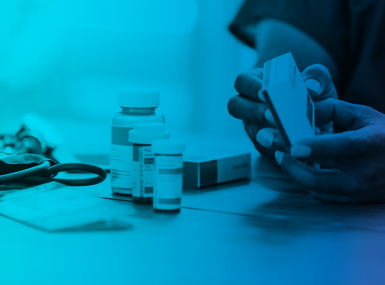
Effective Treatment for Opioid Use Disorder for Incarcerated Populations: A NACo Opioid Solutions Strategy Brief
Medication-assisted treatment (MAT) is considered the “gold standard” of care for opioid use disorder (OUD). Because incarceration is a known driver of opioid overdose, failure to provide this gold standard of care to incarcerated individuals may exacerbate health risks in your community.

Treatment and Recovery for Pregnant and Parenting People: A NACo Opioid Solutions Strategy Brief
Effective treatment for pregnant and parenting people means expanding access to MOUD and adopting a family-centered approach that prioritizes keeping families together.
